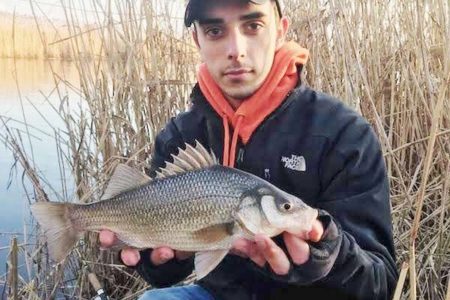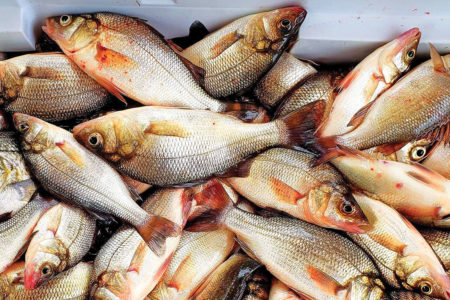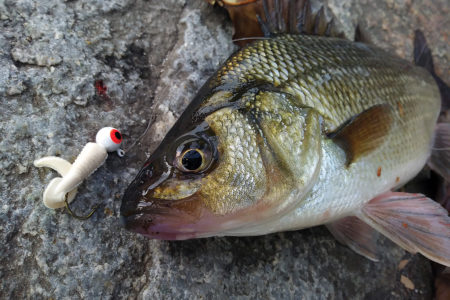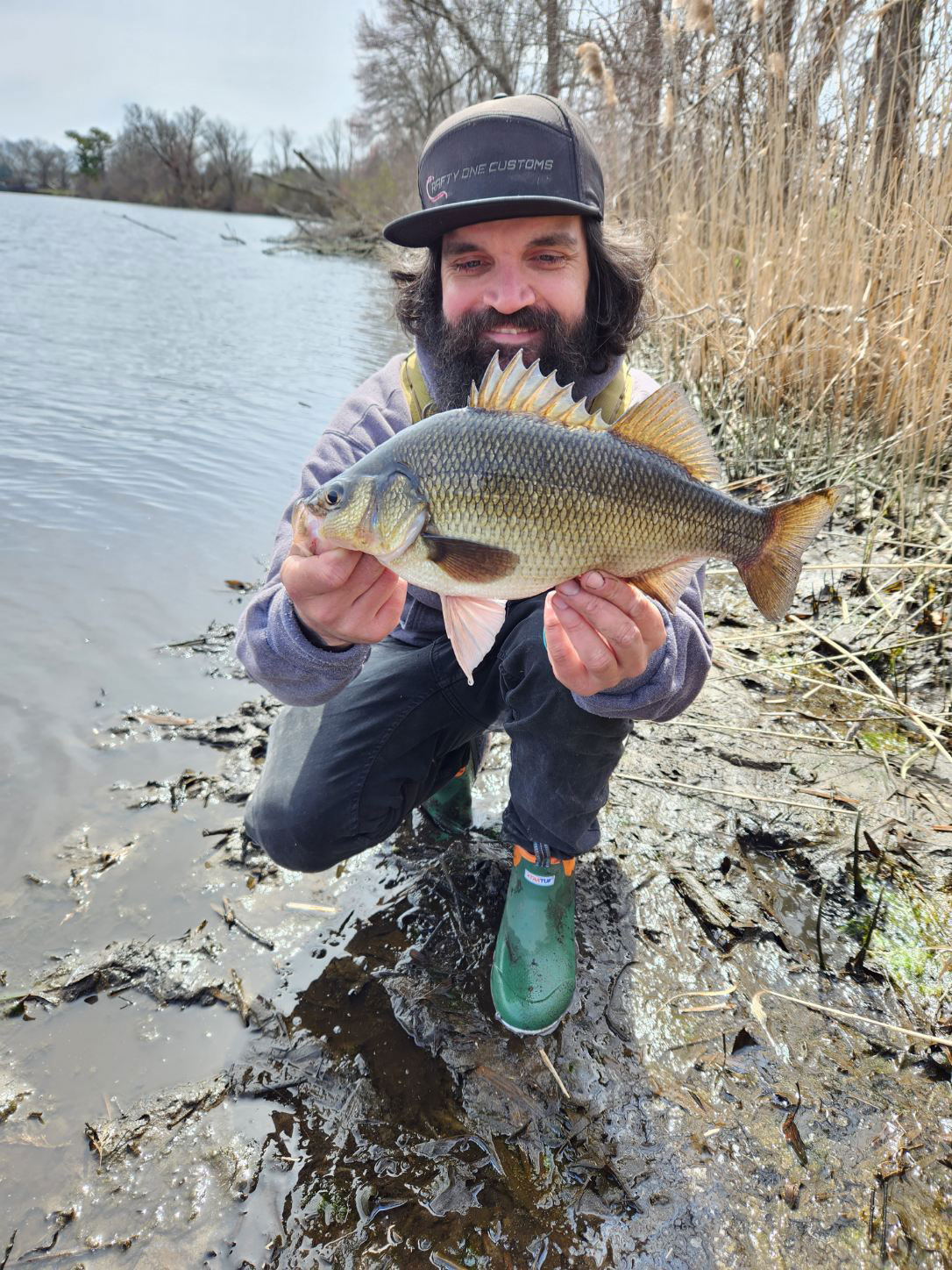
White perch don’t get the respect they deserve, give them a shot in March and you’ll see why this author has become obsessed.
Last March I went on a tear, trying to break the Rhode Island state record for white perch. I came as close as you can come, (in fact I did break the length record). In that time, I caught hundreds of big white perch during a segment of the season when many anglers are – quite simply – not fishing. These fish are abundant and aggressive during the cold months and they don’t get the respect they deserve. If I told you that you could be catching dozens of fish in a few hours, even under the harshest conditions would you believe me? I’m about to make you a believer.
Here in the Northeast, we are really spoiled when it comes to fishing. Over the course of a single season, our list of potential target species is so diverse, whether it’s freshwater or saltwater, inshore or offshore, there’s something out there for everyone, and I do it all. But for me, the one species that really captivates my attention is not a giant bluefin or a massive tog, it’s the Morone Americana, what the hell is that? It’s the white perch, of course! And when the weather makes a turn for the worse in the latter half of winter, that’s the fish I’m chasing.
Passion Or Obsession?
Some call this kind of quest a passion, I’m not ashamed to call it what it really is; an obsession. It started because white perch are so aggressive at this time of year and I was just enjoying the good bite when other species weren’t always so cooperative. But as I honed my technique, I started getting bigger fish and – as they say – so it goes.
The white perch, as you may know, is technically not really a perch at all, it’s actually a member of the temperate bass family; as a matter of fact their closest local cousin is our beloved striped bass. And what the perch lack in size, when compared to their striped cousins, they make up for in aggression, trust me. White perch favor brackish water and can be found in many tidal estuaries from the Chesapeake Bay up to the St. Lawrence River. Additionally, there are countless landlocked populations and, no matter where you find them, you’ll enjoy catching them!
Don’t listen to that nonsense about them being the ‘poor man’s striper’ or only having value as a food fish, although I do love the occasional perch fry. White perch are a formidable opponent on light tackle, they travel in thick schools and often feed competitively, which means fast and furious fishing and that comes regardless of the temperature, I’ve had insane days when it was 24 degrees and I was putting my fingers in my mouth to get some feeling back in them, but the perch wouldn’t quit so neither was I. If they grew to striper sizes they’d be everyone’s favorite fish, but I’m going to give them the respect they deserve.
I think it all started when I was in fifth grade, it was June and I was fishing a local pond for largemouth bass. I came to this inflowing stream and knew it was a likely spot to find a fish. I tossed a 4-inch Storm Shad across the current seam and it didn’t last two seconds, a fish thumped it and I had landed my first white perch. I remember looking at that beautiful fish, so silver it would make a nickel jealous! Cast after cast, I caught those perch laying just out of the current waiting for baitfish to be swept by. That day laid the foundation for the obsession that still burns today.
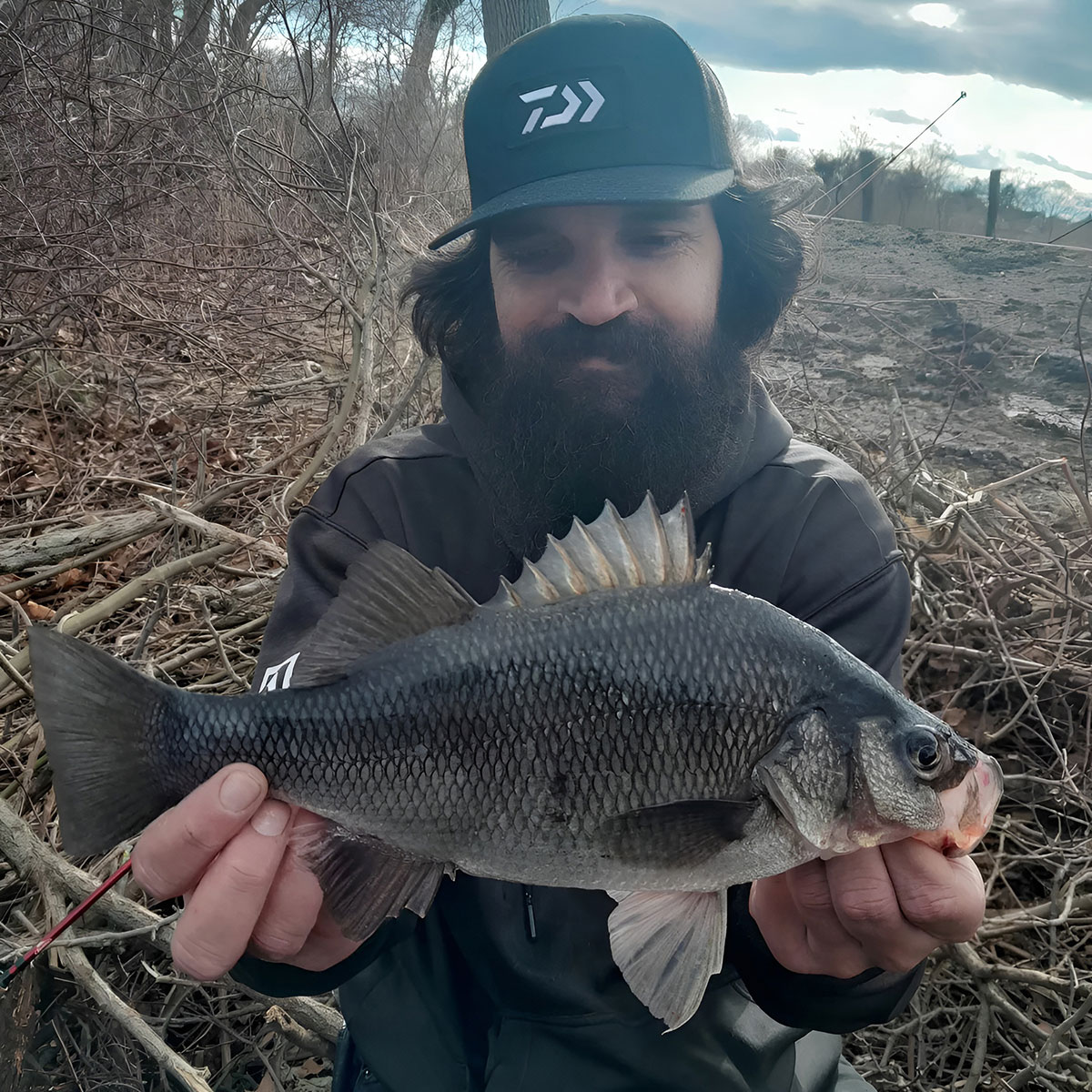
Why Winter?
You might be asking, why would I want to target these fish in the winter if they bite well in June? There are a few reasons to get excited about white perch in winter. The first reson is simply convenience; with the mild winters we’ve been experiencing, ice fishing hasn’t really been an option unless you want to pack up the truck and head north, which isn’t always possible. I took the cue from Mother Nature to maximize my time and fish locally for something I can catch every day if I want to.
The second reason is that their prespawn bulk up period begins a good two or three weeks before the largemouth bass really get fired up so the bite gets hot early and it stays hot for a good long time. Furthermore, I love to fish for a fat and angry fish and they’re never more charged up than just before the spawn. In fact, this activity really begins in late-January, peaks around the last week of February and stays red hot through March. It seems like these fish will eat anything they can fit into their little mouths, from mummichogs and shiners, to worms and fish fry… I don’t think you could come up with a bite-sized creature that they wouldn’t try to eat.
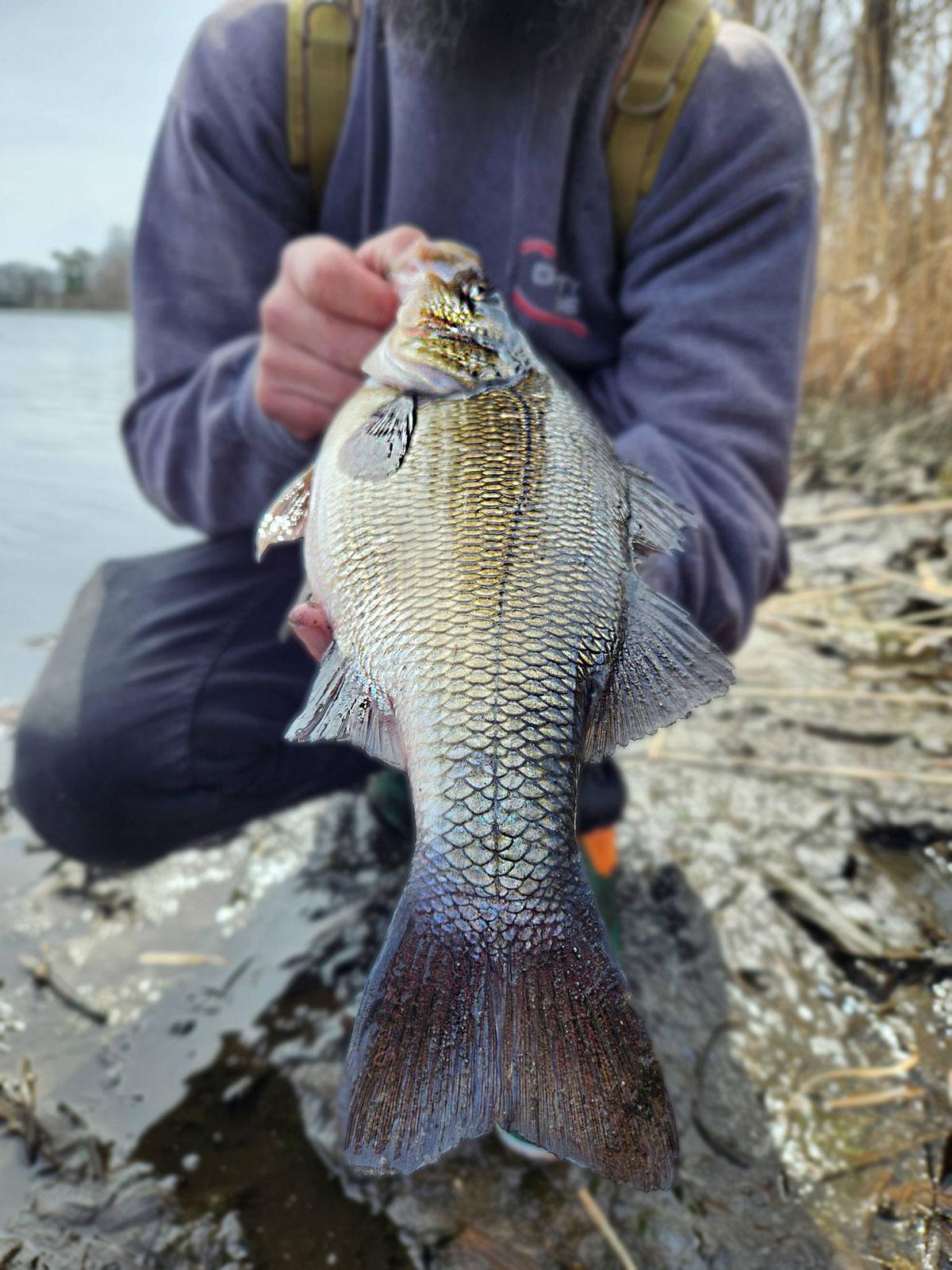
Find The Fish
The most surefire way to find white perch is to find current—tidal or some kind of inflowing water—it’s like dinner bell for these fish. The perch will use the current just like their cousin the striped bass and the faster it’s running the more fired up the fish seem to be. If you don’t have current try points and sand bars. I’ve had great success fishing sand bars for perch, in depths as shallow as 2 feet. Baitfish will sit on those bars in the winter trying to warm up and the perch instinctively know this; that’s a technique I borrowed from largemouth bass fishing. On the points, the fish will stack up in bigger schools, waiting for schools of baitfish to come by, kind of like a speed trap on the highway. Last but not least, if you’re fishing tidal perch use the low tides as a tool to gauge what you’re fishing over, the tides reveal a ton of spots and tell you why the fish are holding in certain spots during the flood.
Once you locate the fish or find a likely spot, you may need to fish the area for a little bit to draw attention to your lure and get the fish fired up. I have also found that sometimes you need to vary your retrieve speed and cadence to find exactly what they are looking for. The good news is, once you find the key combination, they’re not picky and they usually feed competitively. Seriously, it will go zero to 100 on the flip of a switch and the feeding frenzy can last for hours.
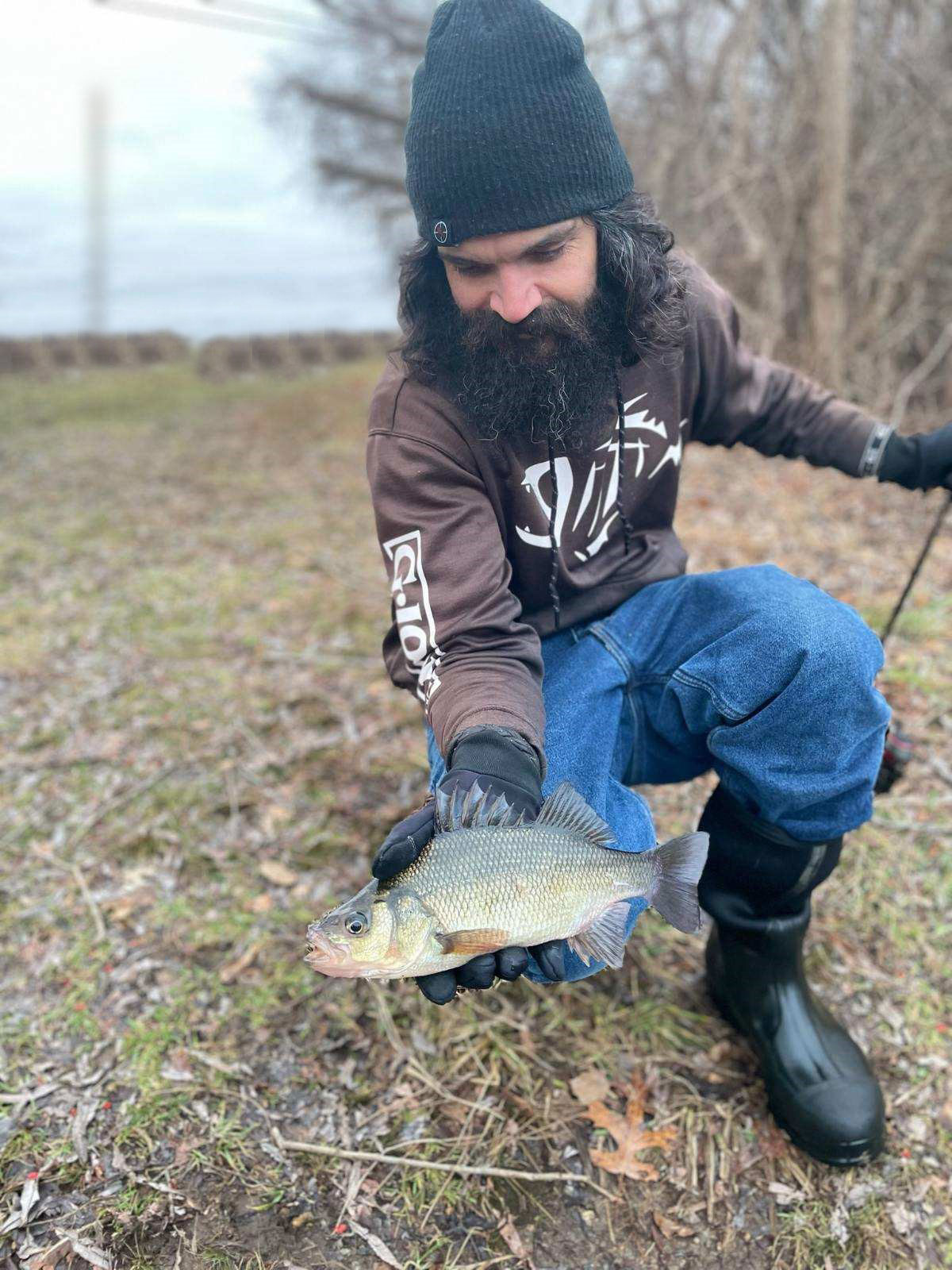
Gearing Up
For lures, you have to think light and my list of confidence baits is fairly short, but covers the water column and offers diversity in speed and action. Perhaps my favorite finesse bait for all freshwater species, the ZMan TRD in Drew’s Craw on a quarter-ounce Ned Head is a bait that gets it done, no matter what you’re fishing for and the perch love them too. These baits are fished along the bottom, typically low and slow. A lot of my damage is done with jerkbaits and Rapala makes both of my favorites; the Rap Shad (09) in ‘Halloween’ coloration or their BX Minnow in ‘Smelt’. These two lures account for a ton of perch, they suspend well in cold water and can be fished any nearly any speed. The typical jerk-jerk-pause, method is deadly on white perch.
The next two would probably be considered by most to be trout lures, the Thomas Buoyant Special Spin and the Worden’s Yakima Rooster Tail are great baits for covering water, they offer good flash, tons of vibration and are very useful when trying to locate fish. The last one is something not enough anglers are fishing these days, the classic hair jig, made with marabou on a quarter-ounce head. They can be snapped up off the bottom or swam within the water column, they resemble dozens of bait species and white perch love them!
| RECORD BREAKER? |
| In case you were wondering, the state record white perch in Rhode Island weighed 2 pounds, 7.28 ounces and taped out at 16.25 inches. If you think you’ve landed a state record in Rhode Island, bring it to an official weigh station (there’s a list on dem.ri.gov) and have it documented for weight and length with the staff at the weigh station. |
Of course, throwing all these light baits means you have to have a stick that’s up to the task of casting them. I carry two rods, I like a shorter stick for when the fish are in tight and longer one for longer casts and covering water. One is a 5-foot, 6-inch Jigging World ultra-light paired with a Penn Fierce IV 1000, I fish 8-pound PowerPro tied to 10-pound J-Fluoro using a uni-to-uni. This setup allows for maximum finesse and that sensitivity and low resistance comes in handy when trying to entice fish to bite. The second is a 6-foot, 6-inch St. Croix paired with another Penn Fierce IV 1000, this rod is still light enough to cast these lures but gives a little more punch for longer casts, but with a little less sensitivity, it’s also great for keeping the fish out of structure. On this one I increase the PowerPro to 10-pound test and stick with the same leader and knots.
If you need any more convincing, I’ve already come within a few ounces of breaking the state record again this year! It’s a fun fishery with fast action and you can catch some really nice fish. With the added incentive of taking home a few fillets if you wish. I hope this inspires you to get out there this month and get on some nice white perch, tight lines!

